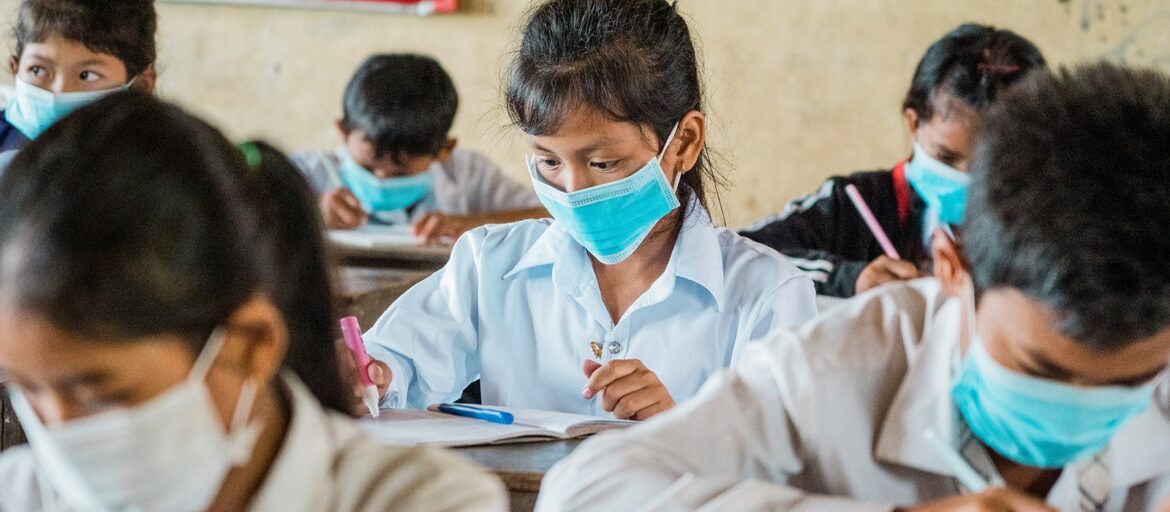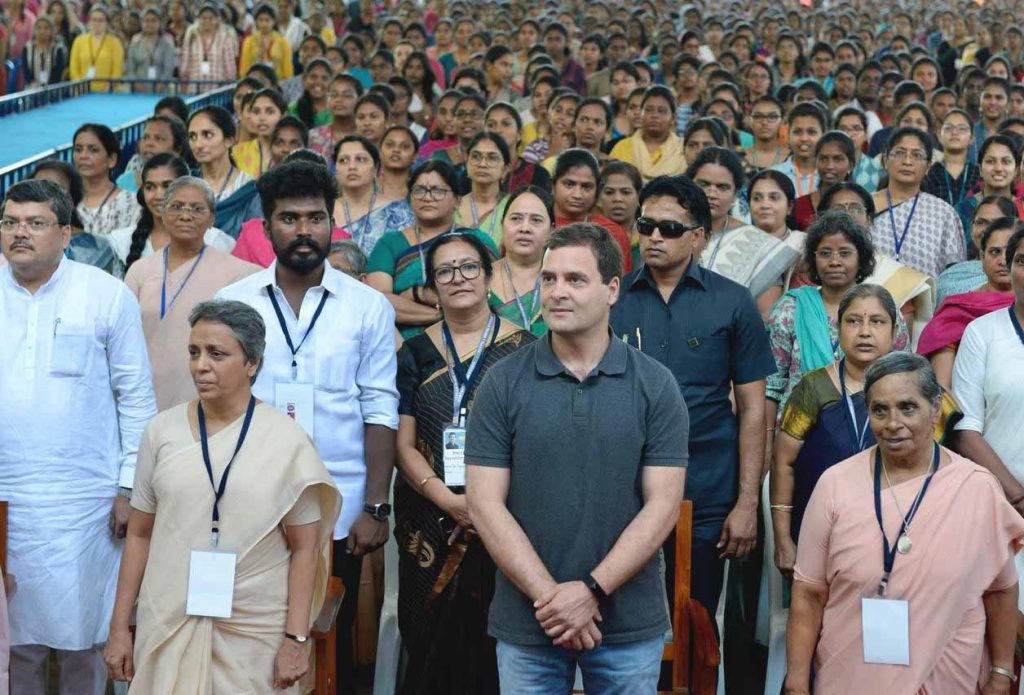By Rajesh Singh
कोरोना महामारी के चलते जब सारे शैक्षणिक संस्थान बन्द है तब शिक्षा का जो स्वरूप बदला है, वह ना तो हमारे देश के छात्रों और ना ही छात्राओं के लिए अच्छा है, क्योंकि इसमें ना तो परस्पर क्रिया है और ना ही सहभागिता। यूनेस्को (संयुक्त राष्ट्र शैक्षणिक, वैज्ञानिक एवं सांस्कृतिक संगठन) के अनुसार भारत में लॉकडाउन के कारण लगभग 32 करोड़ छात्र छात्राओं की पढ़ाई रुकी है, जिसमे लगभग 15.81 करोड़ केवल लड़कियां हैं।
कोरोना महामारी से शिक्षण संस्थान मुख्य रूप से स्कूलों के बंद होने से लड़कियों (खासकर ग्रामीण क्षेत्र में रहने वाली) को सबसे ज्यादा नुकसान हुआ है। अब जब स्कूल जाना नहीं तब उन पर घर के कार्यों का बोझ बढ़ा है I हालांकि पहले भी घर के कार्यों में वो अपना योगदान देती थी, परंतु पहले ये होता था कि सुबह स्कूल जाना है, वहां 6 घंटे रहना है, स्कूल से आकर स्कूल का कार्य करना है, इसमें उनका काफी वक्त लग जाता था जिसके चलते उन्हें घर के सारे कार्य नहीं करने पड़ते थे I परंतु अब सुबह से लेकर शाम तक घर का सारा कार्य उन्हें करना पड़ता है I घर में बड़े बुजुर्ग भी ये कहते हैं कि जब स्कूल नहीं जाना तो कम से कम घर के कार्य करने ही सीख जाओ। इसके साथ ही प्राथमिक स्कूल की बच्चियां जिन्होंने अभी स्कूल जाना शुरू किया था, अभी सीखना शुरू किया था,की तरफ किसी का कोई ध्यान नहीं जा रहा, उनका भविष्य अंधकार में धकेला जा रहा है I आमतौर पर जब कोई इंसान कुछ सीखना शुरू करता है तो उसे अभ्यास की ज़रूरत होती है, यदि कोई चीज़ सीखी हो और उसका अभ्यास ना किया जाए तो बहुत जल्दी वो चीज़ भूल भी जाते हैं और बच्चों जिन्होंने अभी अभी सीखना शुरू किया है उनके लिए सीखी हुई चीजों का अभ्यास करना ज्यादा महत्वपूर्ण हैI
परंतु अब जब पिछले 15 महीनों से स्कूल बंद है तब कैसे छोटे बच्चे घर में अभ्यास करें? हो सकता है कि कुछ परिवार अपने बच्चों को प्रतिदिन कुछ पढ़ा कर अभ्यास करवा पाएं पंरतु लगभग 70 फीसदी परिवार ऐसे है जो दिहाड़ी मजदूरी करके अपना और परिवार का पेट पालते हैं, उनके पास इतना वक्त नहीं होता कि वो अपने बच्चों को पढ़ा पाए I इनमे से भी अधिकतर माता पिता खुद अनपढ़ है तो वो कैसे अपने बच्चों को कुछ सीखा पाएंगे और अगर बच्चा लड़की है तो उसपर बिल्कुल ध्यान नहीं दिया जाता I यदि ट्यूशन भी लगाना हो तो आम जन लड़कियों की बजाए लड़कों को ज्यादा तरजीह देते हैं। इसके साथ ही जो लड़कियां कक्षा 9 या 10 में पढ़ती थी उनकी शादियां हो रही है जिससे उन्हें शारीरिक और मानसिक रूप से बड़े बदलाव के दौर में जीना पड़ रहा है।
यूनेस्को की शिक्षा विभाग की सहायक महानिदेशक “स्टेफेनिया गियनिनी” ने पिछले वर्ष कहा था कि इस महामारी के कारण शैक्षणिक संस्थान बंद होना लड़कियों के लिए बीच मे ही पढ़ाई छोड़ने की चेतवानी है। इससे शिक्षा में लैंगिक अंतर जहां और बढ़ेगा वहीं विवाह की कानूनी उम्र से पहले ही लड़कियों की शादी की संभावनाओं से भी इंकार नहीं किया जा सकता है।
सरकार ने हालांकि शिक्षा बिल्कुल ना रुके इसके लिए ऑनलाइन शिक्षा शुरू की, परंतु भारत में पर्याप्त संख्या में ना तो ऑनलाइन शिक्षा के लिए यंत्र हैं और ना ही आम जन के पास इन्हें चलाने की कला। लोकनीति सीएसडीएस ने अपनी 2019 की रिपोर्ट में बताया कि ग्रामीण क्षेत्रो मे केवल 6 फीसदी परिवारों में और शहरी क्षेत्रों में 25 फीसदी परिवारों के पास कंप्यूटर है। और केवल एक तिहाई घरों में ही स्मार्ट फोन है, इसमें भी अधिकतर घरों में एक ही स्मार्टफोन है, जिसे पूरा परिवार प्रयोग करता है, और ये फोन घर के मुख्य व्यक्ति के पास रहता है, वो जब घर होता है तभी बच्चे उसे प्रयोग कर सकते हैं, और बच्चों में भी लड़कियों की बारी लड़कों के बाद में आती है।
राष्ट्रीय प्रतिदर्श सर्वेक्षण कार्यालय ने अपनी 2017-2018 की रिपोर्ट में कहा था कि भारत में केवल 24 फीसदी परिवारों के पास ही इंटरनेट की सुविधा है। अर्थात् 70 फीसदी परिवारों के पास ना तो कंप्यूटर है ना ही स्मार्टफोन और ना ही इंटरनेट और इसके साथ साथ घरों में ना तो पर्याप्त जगह है जहां पर बैठ कर शांति से बच्चे पढ़ सके और ना ही ऐसा माहौल जिसमे कुछ सीखा जा सके तो इस दौर में ऑनलाइन शिक्षा कैसे सम्भव है? सबसे महत्वपूर्ण तथ्य ये भी है कि ग्रामीण परिवेश में रहने वाले अधिकतर लोगों को सोशल मीडिया चलाना ही नहीं आता I दूसरा जो काम स्कूल द्वारा भेजा जाता है उसे बच्चे समझ ही नहीं पाते कि इसे करना कैसे है, उन्हें बताने वाला कोई नहीं है, और फोन जब शाम को घर आता है तब उसकी बैट्री लगभग खत्म होने को होती है और ग्रामीण क्षेत्रों में बिजली भी 24 घंटे उपलब्ध नहीं होती I इस प्रकार ऐसे अनेकों कारण है जिनकी वजह से ग्रामीण बच्चों और खासकर लड़कियों की पढ़ाई छूट रही है। अब उन्हें वापिस मुख्यधारा में लाना अपने आप में एक चुनौती है।
“दिल्ली आईआईटी की प्रोफेसर डॉ. रीतिका खेड़ा ने कहा है कि ऑनलाइन शिक्षा गरीबों के बच्चों के साथ भद्दा मज़ाक है”।
यूनिसेफ ने प्राथमिक शिक्षा को सबसे ज्यादा महत्वपूर्ण व प्रभावशाली बताया है और कहा है कि जब भी लॉकडाउन जैसा कदम उठाना हो तब प्राथमिक स्कूलों को सबसे बाद में बंद करना चाहिए और जब सब कुछ खुलने लगे तो प्राथमिक स्कूलों को ही सबसे पहले खोलना चाहिए। क्यूंकि हम देखते है की घर के बड़े महिला पुरुष अपने अपने कार्यों को करने के लिए बाहर आते जाते रहते हैं इसलिए यदि वायरस आने का उन्हें कोई खतरा नहीं है तो बच्चों को खतरा कैसे हो सकता है। दूसरी सबसे खास बात ये है कि छोटे बच्चों में संक्रमण का खतरा कम है और इसके साथ साथ यदि प्राथमिक स्कूलों को लंबे समय तक बन्द रखा जाता है तो छोटे बच्चे कुछ भी संख्या या शब्दों को सीख नहीं पाएंगे, जिससे आने वाले समय में उन्हें भारी समस्याओं को सामना करना पड़ेगा। परंतु भारत में अब जब सब खुल चुका है तब कक्षा 9 से 12 तक के स्कूल सबसे पहले खुलने शुरू हुए हैं, जबकि होना इसका उल्टा चाहिए था क्यूंकि इन बड़े बच्चों को कम से कम लिखना पढ़ना तो आता ही है इसलिए इनका जितना नुकसान होना था वो हो चुका परंतु छोटे बच्चों का नुकसान तो प्रतिदिन हो रहा है।
और हम देखें कि यदि छोटी बच्चियों को पढ़ने का अवसर नहीं मिला तो निश्चित रूप से उनकी शादी भी कानूनी उम्र से पहले ही होएगी, उसके बाद उन्हें शारीरिक और मानसिक तनाव का सामना भी करना पड़ सकता है और अनपढ़ता के दौर में शादियों में एक लड़की देके दूसरी लड़की लेने का प्रचलन भी बढ़ने की सम्भावना है। इसलिए सरकार को लड़कियों व उनके भविष्य और एक बेहतर भारत के निर्माण को ध्यान में रखते हुए सारे शिक्षण संस्थान खोल देने चाहिए और ऑफलाइन शिक्षा पुन: शुरू करनी चाहिए क्योंकि कोई भी देश लड़कियों को मुख्यधारा में शामिल किए बिना ना तो अपना विकास कर सकता है और ना ही वहां सभ्य समाज का निर्माण हो सकता है।





